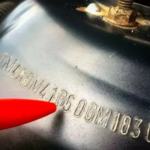The facade plaster is the simplest but effective method of protecting the building from the destructive environmental effects. It also increases the resistance of the building to the fire and gives an attractive appearance. This type of work is seasonal and are performed in dry warm weather. When they are carried out, the following factors are taken into account:
1 – in new buildings, the decoration of the facade, thus, is carried out only after the end of the work and the full precipitation of the walls. Moreover, the quality of plastering directly depends on the quality of the previously carried out stone work;
2 – before starting the finish of the building by plaster, you need to evaluate the condition of the facade and determine the volume of work that should be done;
3 – the process of plastering is carried out on a special set of plastered facade, intended for these purposes, and fixed on the surface of the facade, which allows you to increase the strength and quality of the coating and will further save your time and means that you will have to send for re -repairs if you decide to do without it. auxiliary material;
4 – we work with plaster only in warm, dry weather, these are optimal conditions for a high -quality process of grasping it;
5 – plastering of slopes and arcs is best provided to specialists, since they are performed differently than the same process on even (or relatively smooth) walls.
Since almost all points are the conditions for applying plaster to the facade are more or less understandable to us, let us dwell on the most interesting and intriguing of them, the choice of a special grid.
The grid serves for a more rigid fixation of the plaster and is used in conditions that require greater strength, high -quality grasping with the surface (sometimes even from such a material that does not give rigid adhesion to plaster), as well as when decorating new buildings (who did not have time to completely make a sediment). The material of the manufacture of nets is different, and each type is intended for any special areas of application.
The market currently has the following types of nets:
– woven – a grid made by weaving thin wires with a different cross section;
– Rabitsa – serves to strengthen large layers of plaster than in the previous version, has a larger cell than that of woven;
– welded – unlike the previous types of grid, here the fibers are fastened by welding them at the intersection (used in places where very intense wall subsidence is observed);
– Small-exhaust-here the cells in the grid are formed by cutting them out on a special press, followed by stretching of a sheet of metal;
– polymer – it is best used when it is obvious that the thickness of the applied plaster will be very small.
And so, to perform the process of plaster walls, we first clean their surface from various defects, in the future, measure the size of the wall and, rolling a roll with a reinforcing mesh, measure the piece we need. Having cut off, using screws, nails, we fix the grid on a pre -prepared wall with such a calculation that neighboring net sheets are overlapping each other. By the way, you can, for greater stability and duration of the putty service, apply an antiseptic, it will prevent the appearance of fungi and mold, although some types of modern mixtures already have such means in their composition. And we carry out the putty of the facade, applying the first primer layer, which we then correct and align.






